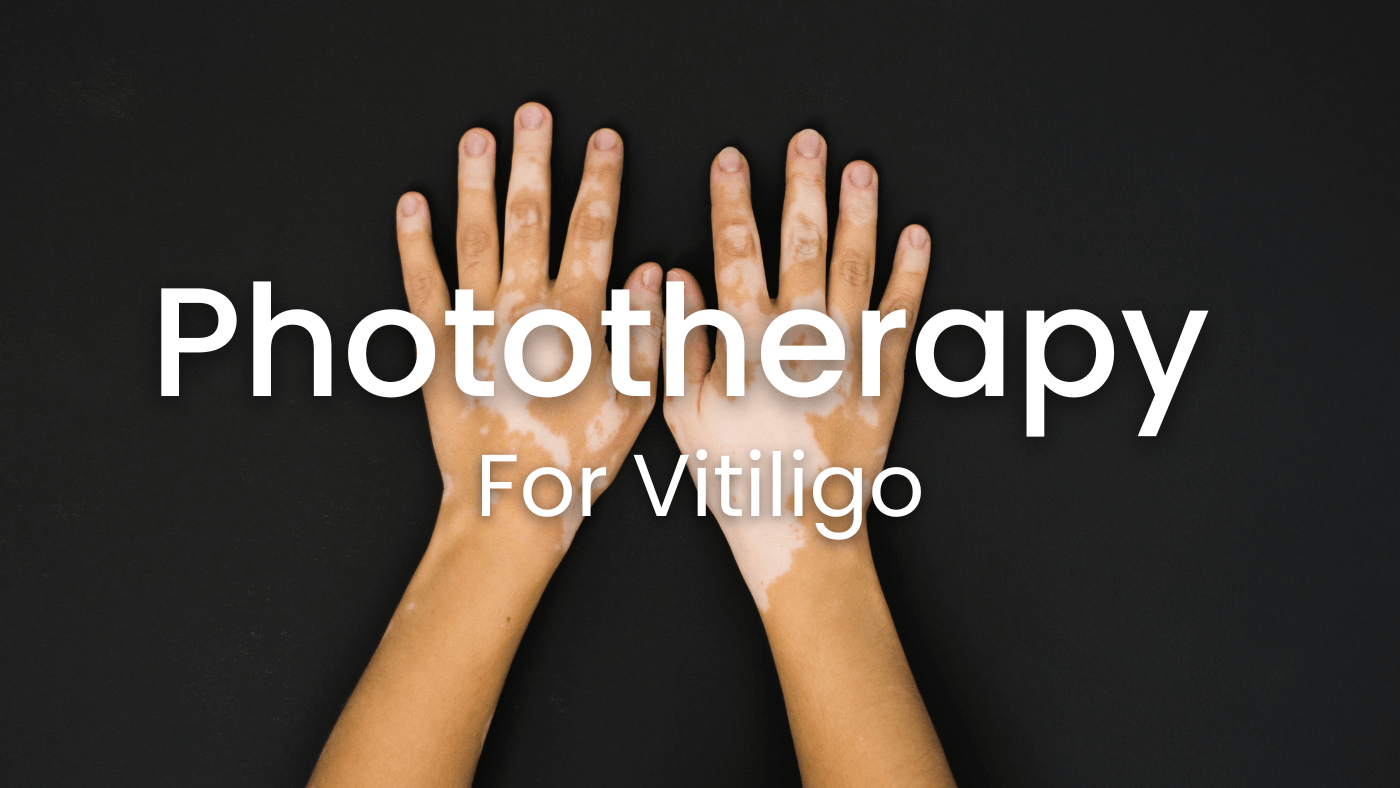Phototherapy for Vitiligo

Vitiligo is an autoimmune condition that affects the skin. It is thought to affect approximately 70 million people worldwide, according to the Global Vitiligo Foundation (1).
Patches of skin lose their colour across the body and can even impact the eyes, the inside of the mouth and the hair.
Due to the complications of vitiligo, including social challenges, phototherapy may be used as a treatment.
What is phototherapy?
Phototherapy is exposure to ultraviolet radiation in the form of UVA or UVB light waves. It can be used for many purposes but primarily to treat skin conditions such as eczema, dermatitis and psoriasis.
What is vitiligo?
Vitiligo is an autoimmune condition characterised by patches of skin that have lost their pigment. A lack of melanin in these patches of the skin causes vitiligo. This is because melanocytes, the cells that make melanin, have died off (2).
This condition can affect any area of the body but commonly occurs on the face, neck, hands and skin creases.
Vitiligo often starts as a paler skin patch that, in time, turns completely white. The edges of these patches may be irregular and can be red and inflamed.
There are two types of vitiligo: non-segmental and segmental. Non-segmental vitiligo is when the patches appear symmetrically on both sides of the body. Segmental vitiligo is known as unilateral vitiligo, as the white patches only affect one side or area of the body.
Vitiligo can cause complications. This includes increased skin vulnerability to the sun because of a lack of melanin, meaning caution has to be taken in the sun.
Vitiligo may also increase the risk of various eye problems. These include inflammation of the iris and the middle layer of the eye. Vitiligo may also be associated with a loss of hearing plus self-esteem issues (3).
Treatment for vitiligo range from cosmetic, like skin camouflage cream, to topical steroid creams or phototherapy.
Can vitiligo be treated with phototherapy?
The evidence for treating vitiligo with phototherapy is promising.
Phototherapy is often used as a treatment for those whose vitiligo is widespread, if vitiligo hasn’t been treated with topical treatments or if there is a significant impact on someone's quality of life (3).
Both UVA and UVB phototherapy treatment has been used for vitiligo. If UVA treatment is used, a medicine called psoralen may make the skin more sensitive to light. UVB light therapy is the preferred phototherapy for many skin conditions because of the reduced risk of skin cancer.
A large study of 29 studies with a total of 1201 patients undergoing treatment of their vitiligo with narrow-band UVB phototherapy found that the repigmentation rate was 44.2% on the face and neck.
Also, at least favourable response rates were 82% on the face and neck and 81.7% on the trunk, highlighting the efficacy of phototherapy as a treatment for vitiligo (4).
Can I treat vitiligo with phototherapy at home?
Treating vitiligo at home using a portable UVB narrow-band phototherapy lamp can be a more cost-effective and convenient alternative to seeking treatment in outpatient facilities like hospitals or doctors' offices.
Home-based phototherapy treatment has been around since 1979 for the treatment of psoriasis and was adapted for vitiligo in the 1990s (5). It has been suggested that home treatment is beneficial for vitiligo treatment because of the increased compliance compared to the in-person, outpatient approach (6).
If you are looking for a medically certified phototherapy lamp at home, you may be interested in Care Lamps’ Derma UVB Narrowband Phototherapy Lamp. It comes with full setup and treatment instructions with a suggested treatment schedule for people with vitiligo.
How long does it take for phototherapy to work on vitiligo?
Research has suggested that the optimal frequency for treating vitiligo with phototherapy is three times per week, but two times per week is also acceptable, but it will take longer to see results (6).
It’s essential to take at least 24 hours between treatments as downtime or until any redness subsides.
The Vitiligo Working Group suggest tapering phototherapy treatment following repigmentation to two times per month in the month following repigmentation before reducing down to once per week in month two. For months three to four, they advise reducing further to every other week before discontinuing use after month four (6).






Leave a comment